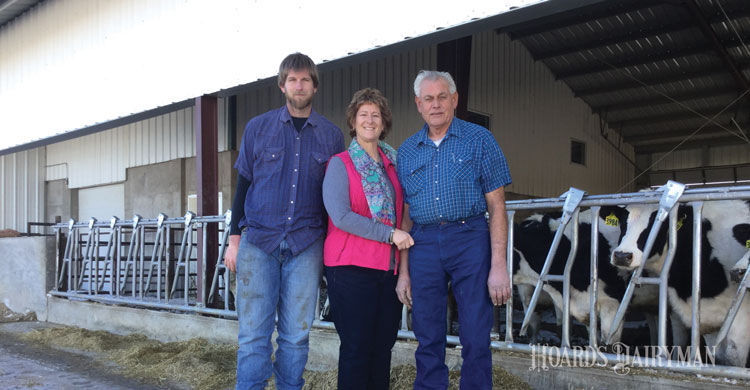
“We have always used a ‘waterfall’ approach to grouping on the dairy,” shared Marc Etchebarne, nutritionist at Hillrose Dairy. “All cows on the farm start in the fresh pen (we shoot for an average of 15 days in milk in that pen). From there, second-lactation and greater cows go to the high diet while first-lactation animals go to their own pen and diet,” explained Etchebarne, who works closely with the farm’s owners Nelly and Hendrik Binnendyk.
“Based off of pregnancy status and days in milk, high cows move down to the medium and later lactation diet while the first-lactation animals can possibly stay on their diet their entire lactation if pen space permits. Otherwise, they move to the medium/later lactation diet before being dried,” explained Etchebarne of the 2,000-cow dairy in Colorado.
Four farms that excel in milk production shared additional insights into feeding and breeding for a high-producing herd in this Hoard’s Dairyman Intel as well as the Round Table, “These farms feed for production,” found on pages 82 to 84 of the February 10 issue of Hoard’s Dairyman.
Here are additional responses to the question, “How do you group cows?”
Cold Run Jerseys, Salem, Ohio: We have two groups. The first group is fresh cows to 150 days in milk (DIM). The second group is pregnant cows and cows over 150 DIM. We have always grouped cows this way. We feed the same diet to both groups. Our cows maintain a very persistent lactation curve, and we feel they need to be kept on a “high-cow ration” to maintain production.
Ever-Green-View, Waldo, Wis.: Because we milk in a tie stall barn, cows are not grouped, but each one has an individual comfort stall. Young cows are housed right next to older cows.
Kenyon Hill Farm, Cambridge, N.Y.: We milk two ways on the farm. Some cows are milked in a traditional parlor and some with robots. In the new barn that houses our robots, one side of the barn is 2 year olds, the other side is mature cows. In our older barn that is connected to the parlor, cows are housed in one group. All fresh cows go into the parlor herd first and then are put into robots when they are up and running, usually before they reach 10 days in milk. The major diet difference between the groups is the difference in the TMR versus the PMR. The ration is balanced for higher milk production in the robots when you include the pellets.
Click on the links below to view previous reports from this Round Table series:
Where breeding and feeding align
They prepare for strong production from birth








